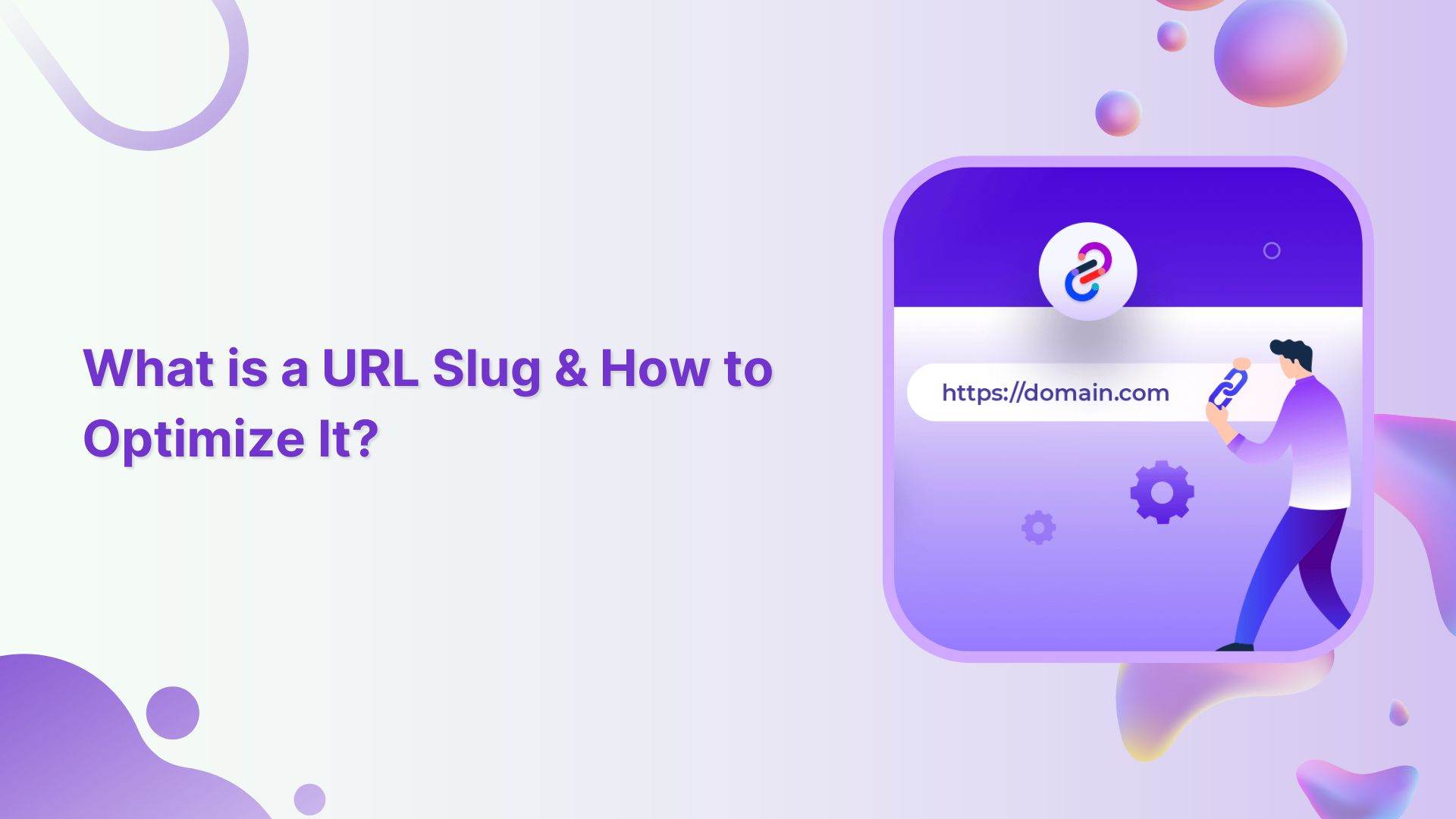URL slug, or user-friendly web address, plays a vital role in enhancing user experiences and attracting search engine attention. Think of them as the superheroes of your website’s links, guiding visitors and search engines to the right content with ease.
But why should you care about optimizing URL slugs? The answer is simple: by optimizing these slugs, you can boost your website’s visibility, increase click-through rates, and improve overall user engagement. It’s like giving your website a powerful advantage in the digital arena.
In this guide, we’ll dive into practical strategies and expert tips for optimizing your URL slugs. You’ll learn how to create concise and descriptive slugs that resonate with both humans and search engines, ultimately leading to improved rankings and a better user experience.
Let’s dive in and uncover the secrets of URL slug optimization together!
What is a URL slug?
A URL slug is a component of a web address or URL that represents a specific page or resource on a website. It is the human-readable part of the URL that typically appears after the domain name or root address. URL slugs are designed to be descriptive and concise, providing users with a clear idea of the content they can expect to find on the page.
For example, in the URL “https://www.example.com/blog/post-title,” the slug is “post-title.” It serves as a user-friendly identifier for a particular blog post on the website. The purpose of a URL slug is to improve the readability of the web address, making it easier for users to understand and remember.
URL slugs often contain relevant keywords that describe the content of the page, which can have benefits for search engine optimization (SEO). Search engines use these slugs as signals to understand the context and relevance of a webpage, potentially improving its visibility in search results.
Also read: How to Create Tiny URL: Step-by-Step Guide
How to edit a URL slug in WordPress?
Here’s how to edit and change your URL slug in WordPress:
Step 1: Log in to your WordPress dashboard.
Step 2: In WordPress, the slug is the part of your URL that you can edit when writing or editing a post.
Note: WordPress will automatically update the URL slug based on your modifications. However, keep in mind that changing the URL slug of an existing post or page may affect its SEO and any existing links pointing to that URL. Consider setting up proper redirects to avoid broken links or loss of search engine rankings if necessary.
Check out this post on how to redirect a URL in WordPress!
Step 3: To change an existing URL slug or to change the URL slug structure access permalink settings. From the left-hand menu, locate and click on “Settings,” and then select “Permalinks.” This action will take you to the Permalink Settings page, where you can customize your Permalink structure.
Note: We recommend choosing an option in which the URL contains relevant words, as this provides users and search engines with more information about the page than an ID or parameter would.
Remember to preview your changes and verify that the new URL slug reflects your intentions before publishing or updating the post/page.
Also read: What Is a Permalink? How Does It Impact SEO Ranking?
How to shorten or change any URL slug easily?
If you’re looking for an easy way to shorten or change URL slugs, you can utilize our link management tool called “Replug.” Replug is a powerful tool that allows you to manage and optimize your URL slugs effortlessly. Here’s how you can use Replug to shorten or modify your URL slugs:
Step 1: Sign in to Replug or create an account for free.

Step 2: Select a campaign from your main dashboard, or create a new one.
Note: Here’s how to “Create a campaign in a few seconds.”
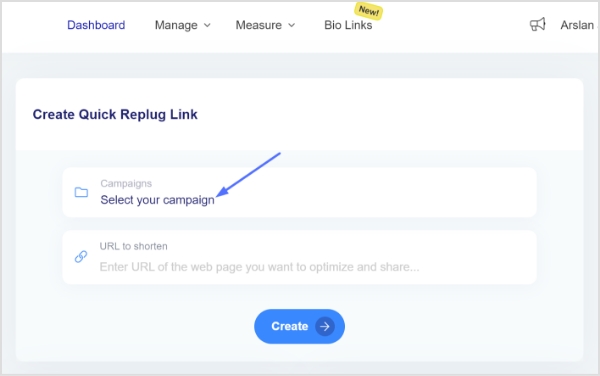
Step 3: Enter the link in the “URL to shorten” section below “Select your campaign” and click Create.
Note: Here, you can also add UTM parameters to your link to track the performance of that link. Using UTM parameters can help you better understand which marketing channels and campaigns are driving the most traffic and conversions for your website.
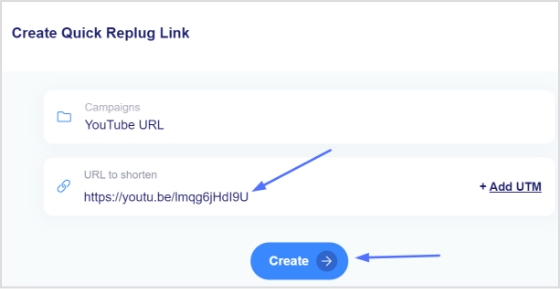
Also read: How to add utm code to the URL using a link shortener?
Step 4: A shortened link will be generated for you. Click the edit icon and type the URL slug you want to use in the link.
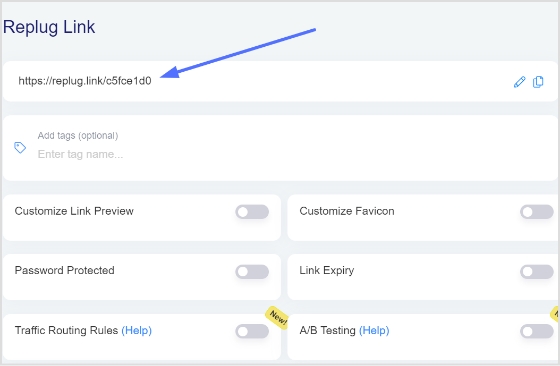
Step 5: Copy the new link, hit the update button, and you’re done.
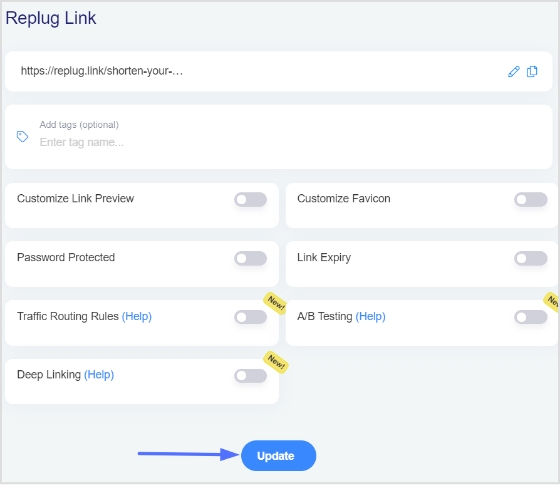
Also read: How to create a vanity URL?
Why are URL slugs important for SEO?
URL slugs play an important role in search engine optimization (SEO) for several reasons:
Relevance and Keyword Visibility:
URL slugs provide search engines and users with valuable information about the content of a webpage. Including relevant keywords in the URL, slug can help search engines understand the context of the page and improve its visibility in relevant search results.
User Experience:
Clear, concise, and descriptive URL slugs make it easier for users to understand what a webpage is about before clicking on it in search results. When the URL slug aligns with the user’s search intent, they are more likely to click through, resulting in improved user engagement metrics, such as click-through rates (CTRs).
Also read: How to Fix Broken Links in WordPress – A Complete Guide
Readability and Memorability:
URL slugs that are easy to read and remember can contribute to a positive user experience. When users can recall or manually enter a URL
based on its slug, it can increase direct traffic to the website and enhance brand recognition.
Link Sharing and Anchor Text:
When other websites link to your content, they often use the URL as the anchor text. Having an optimized URL slug with relevant keywords can make the anchor text more informative and contribute to the overall SEO value of the backlink.
Social Sharing:
URL slugs are often displayed when content is shared on social media platforms. A clean, concise, and keyword-rich slug can make the shared link more appealing, increasing the likelihood of clicks and engagement on social media.
Also read: How to Disguise a Link Using a URL Shortener?
FAQs
How can I optimize URL slugs for better search engine rankings?
To optimize URL slugs, aim for concise and descriptive slugs that include relevant keywords. Avoid using stop words, numbers, or unnecessary characters. Ensure the slug accurately reflects the content of the page and is user-friendly.
Are there any best practices for creating descriptive URL slugs?
Yes, some best practices include using lowercase letters, separating words with hyphens, and keeping the slug brief but meaningful. Incorporate relevant keywords naturally and make sure the slug is easy to understand and remember.
Can I change the URL slug of an existing webpage without affecting SEO?
Changing URL slugs can impact SEO if not handled properly. It’s crucial to set up proper redirects (301 redirects) from the old URL to the new one to maintain search engine rankings and avoid broken links.
What are the potential consequences of having long or irrelevant URL slugs?
Long or irrelevant URL slugs can negatively affect SEO and user experience. They may confuse search engines and users, hamper keyword visibility, and result in lower click-through rates.
Are there any WordPress plugins or tools specifically designed for URL slug optimization?
Yes, there are several WordPress plugins available that can assist with URL slug optimization, such as Yoast SEO, Rank Math, or All in One SEO Pack. These plugins offer features to customize and optimize URL slugs within your WordPress website.
How do URL slugs impact user experience and website navigation?
URL slugs impact the user experience by providing a clear indication of what to expect from a webpage. Descriptive and readable slugs help users understand the content and improve website navigation, leading to better engagement and satisfaction.
Should I include keywords in my URL slugs, and if so, how can I choose the right ones?
Including relevant keywords in URLs, and slugs can be beneficial for SEO. Choose keywords that accurately represent the page’s content and align with user search intent. Conduct keyword research to identify commonly used terms and phrases.
Are there any recommended character limits or restrictions for URL slugs?
While there is no strict character limit for URL slugs, it’s generally recommended to keep them as concise as possible. Long slugs may get truncated in search results, so aim for a length that is easy to read and share.
Can URL slugs be localized for multilingual websites, and how does it affect SEO?
Yes, URL slugs can be localized for multilingual websites to cater to different languages or regions. Properly localized slugs help improve SEO by signaling to search engines the language or region-specific relevance of the content.
You may also like:
Online Branding: The Roadmap to Stand Out and Succeed Online
How to Share Videos using Deep Links?
How to Make a Url Link in Word?
What is Split Testing and How Does It Work: Ultimate Guide



























